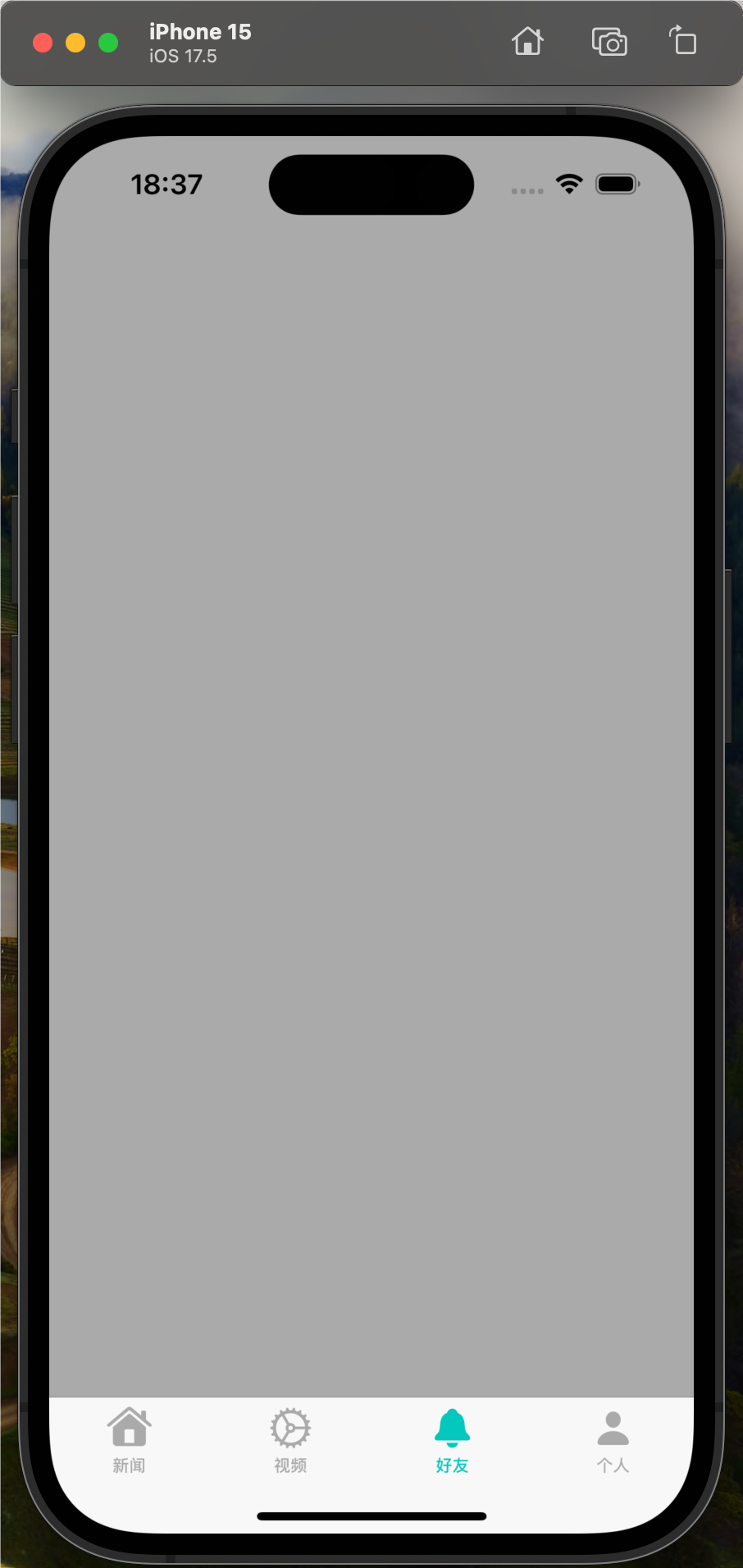我是UICollectionViewFlowLayout的子类,以便在UICollectionView中进行双向滚动.对于较少数量的行和节数(100-200行和节),滚动工作正常,但是当我在UICollectionView中增加行和节数超过500,即250,000或更多单元格时,滚动时存在明显的滞后.我已经在layoutAttributesForElementsInRect中跟踪了for循环的源代码.我使用Dictionary来保存每个单元格的UICollectionViewLayoutAttributes以避免重新计算它并循环遍历它以从layoutAttributesForElementsInRect返回单元格的属性
import UIKit
class LuckGameCollectionViewLayout: UICollectionViewFlowLayout {
// Used for calculating each cells CGRect on screen.
// CGRect will define the Origin and Size of the cell.
let CELL_HEIGHT = 70.0
let CELL_WIDTH = 70.0
// Dictionary to hold the UICollectionViewLayoutAttributes for
// each cell. The layout attribtues will define the cell's size
// and position (x,y,and z index). I have found this process
// to be one of the heavier parts of the layout. I recommend
// holding onto this data after it has been calculated in either
// a dictionary or data store of some kind for a smooth performance.
var cellAttrsDictionary = Dictionary<NSIndexPath,UICollectionViewLayoutAttributes>()
// Defines the size of the area the user can move around in
// within the collection view.
var contentSize = CGSize.zero
override func collectionViewContentSize() -> CGSize {
return self.contentSize
}
override func prepareLayout() {
// Cycle through each section of the data source.
if collectionView?.numberOfSections() > 0 {
for section in 0...collectionView!.numberOfSections()-1 {
// Cycle through each item in the section.
if collectionView?.numberOfItemsInSection(section) > 0 {
for item in 0...collectionView!.numberOfItemsInSection(section)-1 {
// Build the UICollectionVieLayoutAttributes for the cell.
let cellIndex = NSIndexPath(forItem: item,inSection: section)
let xPos = Double(item) * CELL_WIDTH
let yPos = Double(section) * CELL_HEIGHT
let cellAttributes = UICollectionViewLayoutAttributes(forCellWithIndexPath: cellIndex)
cellAttributes.frame = CGRect(x: xPos,y: yPos,width: CELL_WIDTH,height: CELL_HEIGHT)
// Save the attributes.
cellAttrsDictionary[cellIndex] = cellAttributes
}
}
}
}
// Update content size.
let contentWidth = Double(collectionView!.numberOfItemsInSection(0)) * CELL_WIDTH
let contentHeight = Double(collectionView!.numberOfSections()) * CELL_HEIGHT
self.contentSize = CGSize(width: contentWidth,height: contentHeight)
}
override func layoutAttributesForElementsInRect(rect: CGRect) -> [UICollectionViewLayoutAttributes]? {
// Create an array to hold all elements found in our current view.
var attributesInRect = [UICollectionViewLayoutAttributes]()
// Check each element to see if it should be returned.
for (_,cellAttributes) in cellAttrsDictionary {
if CGRectIntersectsRect(rect,cellAttributes.frame) {
attributesInRect.append(cellAttributes)
}
}
// Return list of elements.
return attributesInRect
}
override func layoutAttributesForItemAtIndexPath(indexPath: NSIndexPath) -> UICollectionViewLayoutAttributes? {
return cellAttrsDictionary[indexPath]!
}
override func shouldInvalidateLayoutForBoundsChange(newBounds: CGRect) -> Bool {
return false
}
}
编辑:
以下是我在layoutAttributesForElementsInRect方法中提出的更改.
override func layoutAttributesForElementsInRect(rect: CGRect) -> [UICollectionViewLayoutAttributes]? {
// Create an array to hold all elements found in our current view.
var attributesInRect = [UICollectionViewLayoutAttributes]()
let xOffSet = self.collectionView?.contentOffset.x
let yOffSet = self.collectionView?.contentOffset.y
let totalColumnCount = self.collectionView?.numberOfSections()
let totalRowCount = self.collectionView?.numberOfItemsInSection(0)
let startRow = Int(Double(xOffSet!)/CELL_WIDTH) - 10 //include 10 rows towards left
let endRow = Int(Double(xOffSet!)/CELL_WIDTH + Double(Utils.getScreenWidth())/CELL_WIDTH) + 10 //include 10 rows towards right
let startCol = Int(Double(yOffSet!)/CELL_HEIGHT) - 10 //include 10 rows towards top
let endCol = Int(Double(yOffSet!)/CELL_HEIGHT + Double(Utils.getScreenHeight())/CELL_HEIGHT) + 10 //include 10 rows towards bottom
for(var i = startRow ; i <= endRow; i = i + 1){
for (var j = startCol ; j <= endCol; j = j + 1){
if (i < 0 || i > (totalRowCount! - 1) || j < 0 || j > (totalColumnCount! - 1)){
continue
}
let indexPath: NSIndexPath = NSIndexPath(forRow: i,inSection: j)
attributesInRect.append(cellAttrsDictionary[indexPath]!)
}
}
// Return list of elements.
return attributesInRect
}
我已经计算了collectionView的偏移量,并用它来计算屏幕上可见的单元格(使用每个单元格的高度/宽度).我不得不在每一侧添加额外的单元格,以便当用户滚动时没有丢失的单元格.我测试了这个并且性能很好.
解决方法
通过利用已知单元格大小的layoutAttributesForElementsInRect(rect:CGRect),您不需要缓存属性,只需在collectionView请求它们时为给定的rect计算它们.您仍然需要检查0的边界情况和最大的部分/行计数,以避免计算不需要的或无效的属性,但可以在循环周围的where子句中轻松完成.这是一个工作示例,我已经测试了1000个部分x 1000行,它工作得很好,没有滞后于设备:
编辑:我添加了更大的Result,以便在滚动到达之前可以预先计算属性.从您的编辑看起来,您仍然在缓存我认为性能不需要的属性.此外,它会带来更大的内存占用,滚动更多.还有一个原因是你不想从回调中使用提供的CGRect而不是从contentOffset手动计算一个?
class LuckGameCollectionViewLayout: UICollectionViewFlowLayout {
let CELL_HEIGHT = 50.0
let CELL_WIDTH = 50.0
override func collectionViewContentSize() -> CGSize {
let contentWidth = Double(collectionView!.numberOfItemsInSection(0)) * CELL_WIDTH
let contentHeight = Double(collectionView!.numberOfSections()) * CELL_HEIGHT
return CGSize(width: contentWidth,height: contentHeight)
}
override func layoutAttributesForElementsInRect(rect: CGRect) -> [UICollectionViewLayoutAttributes]? {
let biggerRect = rect.insetBy(dx: -2048,dy: -2048)
let startIndexY = Int(Double(biggerRect.origin.y) / CELL_HEIGHT)
let startIndexX = Int(Double(biggerRect.origin.x) / CELL_WIDTH)
let numberOfVisibleCellsInRectY = Int(Double(biggerRect.height) / CELL_HEIGHT) + startIndexY
let numberOfVisibleCellsInRectX = Int(Double(biggerRect.width) / CELL_WIDTH) + startIndexX
var attributes: [UICollectionViewLayoutAttributes] = []
for section in startIndexY..<numberOfVisibleCellsInRectY
where section >= 0 && section < self.collectionView!.numberOfSections() {
for item in startIndexX..<numberOfVisibleCellsInRectX
where item >= 0 && item < self.collectionView!.numberOfItemsInSection(section) {
let cellIndex = NSIndexPath(forItem: item,inSection: section)
if let attrs = self.layoutAttributesForItemAtIndexPath(cellIndex) {
attributes.append(attrs)
}
}
}
return attributes
}
override func layoutAttributesForItemAtIndexPath(indexPath: NSIndexPath) -> UICollectionViewLayoutAttributes? {
let xPos = Double(indexPath.row) * CELL_WIDTH
let yPos = Double(indexPath.section) * CELL_HEIGHT
let cellAttributes = UICollectionViewLayoutAttributes(forCellWithIndexPath: indexPath)
cellAttributes.frame = CGRect(x: xPos,height: CELL_HEIGHT)
return cellAttributes
}
}

